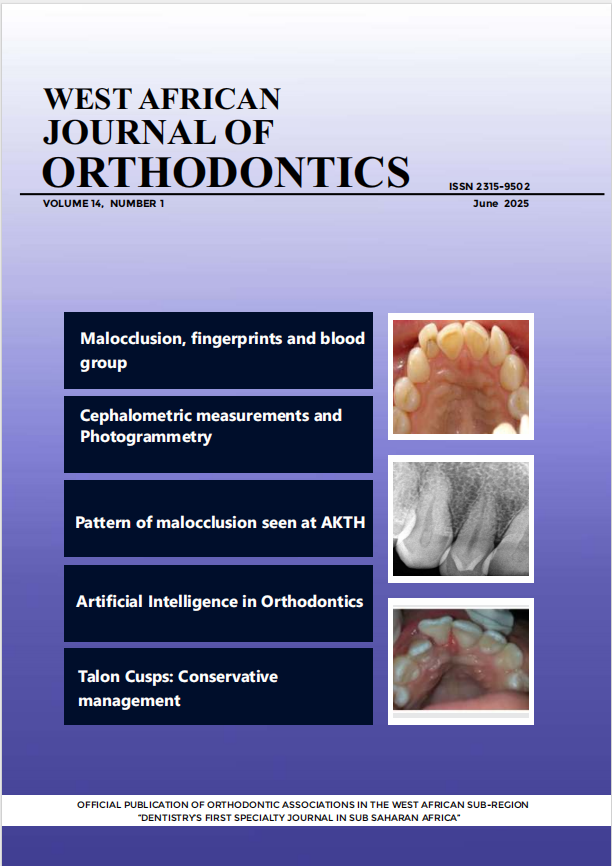The Relationship Between Skeletal Malocclusions, Fingerprints and Blood Group in Patients Attending an Orthodontic Clinic in Benin City
Keywords:
Fingerprint, blood group, malocclusion, skeletalAbstract
development of malocclusion. The wide variations observed have been suggested to be due to genetic and environmental influences. More research to ascertain the relationship between malocclusion with fingerprints and blood group in Nigerians is essential. The objective of the study was to assess the relationship between skeletal malocclusion with fingerprints and blood group in a Nigerian population.
Methods: A total of 205 patients, aged 13-40 years, attending the Orthodontic clinic of the University of Benin Teaching Hospital, Benin City who met the inclusion criteria were selected. Their sagittal and vertical jaw relationships were determined by tracing the patients' lateral cephalometric radiograph. Fingerprints of both hands were taken using a Bio scanner, while blood samples were collected to determine their ABO blood group.
Results: More than half of the patients (55.6%) had skeletal pattern 1 malocclusion. The fingerprint pattern showed that the ulnar loop had the highest frequency across all types of skeletal malocclusion (61.8%), followed by whorl (24.5%), arch (10.2%), and radial loop (3.5 %). The fingerprint patterns of the left thumb, index finger, fifth finger, and right thumb had significant relationship with the different classes of skeletal malocclusion (p<005)
Conclusion: There was a relationship between dermatoglyphic pattern and skeletal malocclusion. No significant relationship was found between skeletal malocclusion and blood group. Dermatoglyphic patterns of some digits show predictive values when compared to others.




